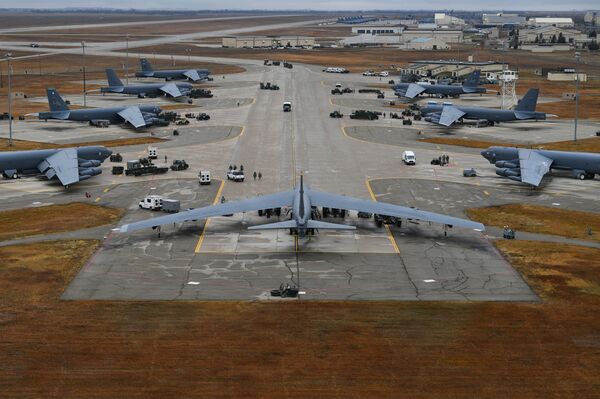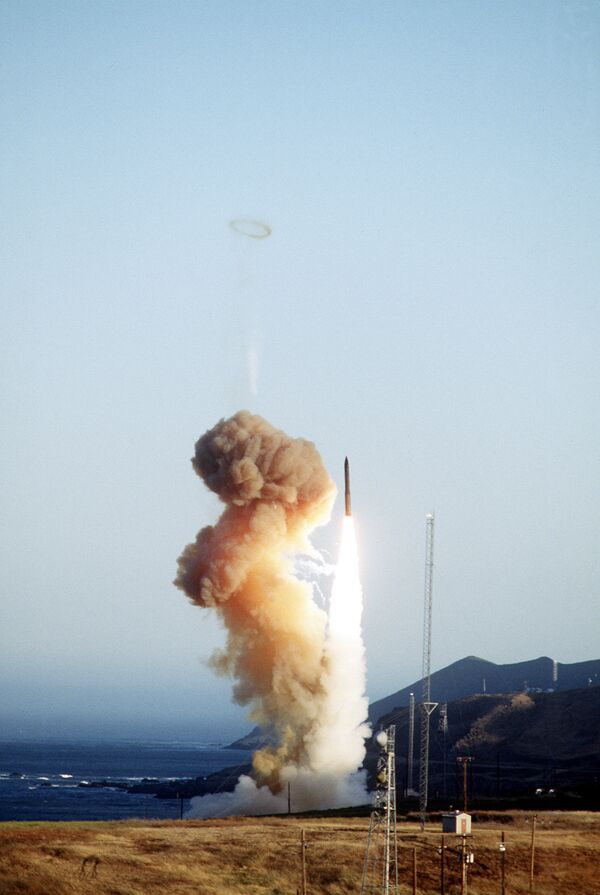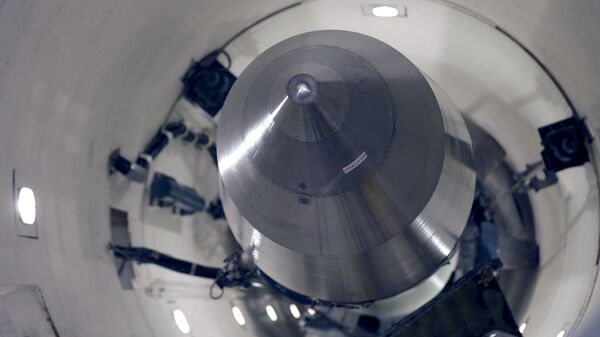Esper paid a visit to the remote Minot Air Force Base in North Dakota, just 40 miles south of the US-Canada border, where he met with airmen from the US’ nuclear bomber and missile arsenals to “gain a first-hand understanding” of the only US base to house two of the nuclear triad’s three wings, as well attending as a town hall in nearby Minot, according to a DoD release. The third part of the triad, submarine-launched ballistic missiles (SLBMs), couldn’t be further away from the prairies of the North American interior.
Esper is just the second Pentagon chief to visit the base, following a 2008 visit by then-Secretary Robert Gates, the Minot Daily News noted.
Replacing Aging Systems
Minot is home to the 5th Bomber Wing and 91st Missile Wing, which between them have two squadrons of B-52H Stratofortress bombers armed with nuclear gravity bombs, and 150 LGM-30G Minuteman III intercontinental ballistic missiles scattered in silos across an area roughly the size of Massachusetts.
Both weapons are showing their age: the B-52 entered service in the early 1950s, with the youngest aircraft built in 1962, and the Minuteman IIIs entered service in 1970. The Pentagon has long planned to phase both systems out in the coming years, but the colossal expense of replacing them has been an imposing obstacle.
In early 2019, the Department of Energy’s National Nuclear Security Administration completed a 20-year-long overhaul of the US Navy’s submarine-based nuclear warheads, and former US President Barack Obama began a $1.5 trillion modernization of the entire nuclear arsenal in 2010.

Some of the more recent expenses in that hefty bill include a new command center ($7 billion), a new stealth bomber ($2.8 billion), a new ballistic missile submarine ($4.4 billion), a new cruise missile delivery system ($474 million) and a new ICBM ($1.5 billion), according to budget requests made by the Pentagon for fiscal year 2021.
On top of that is $20 billion in new warheads, $20 billion for missile defense and $6 billion set aside for environmental cleanup. Together, the proposed nuclear spending in fiscal year 2021 comes to $75 billion, or 10% of the entire military budget, according to William D. Hartung, director of the Arms and Security Program at the Center for International Policy think tank.
Following Esper’s visit to Minot will be a trip southward to Offutt Air Force Base in Omaha, Nebraska - the home of US Strategic Command - which will “include leadership meetings and an overview of the new Command and Control Facility,” as well as another town hall, the DoD release notes.
The Washington Examiner noted that Adm. Charles Richard, who commands US nuclear forces, will be among those present at Offlut. Richard has been outspoken in his criticism of complacency toward the question of nuclear modernization, telling the Senate Armed Services Committee last week that he was “concerned that the oft-repeated message of the need to modernize and recapitalize has lost its impact, and that collectively we have underestimated the risks associated with such a complex and time-constrained modernization and recapitalization effort.”
Critics Point to Increased Danger of War
However, the expansive US nuclear arsenal, which numbers more than 5,000 nuclear weapons, also has its critics as Pentagon strategy returns to “Great Power competition” with Russia and China.

In August, the Intermediate-Range Nuclear Forces (INF) Treaty officially lapsed, permitting the legal construction of land-based missiles with ranges between 500 and 5,000 kilometers by Russia and the US. The 1987 treaty aimed to ease tensions caused by US nuclear missiles deployed to Europe that were capable of reaching Moscow in just eight minutes, greatly increasing the risk of an accidental nuclear response.
US President Donald Trump has ordered the construction of a smaller version of the W76 nuclear warhead, for which Democratic lawmakers attempted to block funding. The W76-2 entered service earlier this month, with an estimated yield of 5 kilotons, or one-third the power of the bomb that destroyed Hiroshima, Japan, in 1945.
In addition, in June 2019, the Joint Chiefs of Staff accidentally published a document titled "Nuclear Weapons: Planning and Targeting,” which argued for the limited use of nuclear weapons to win a conventional conflict.
“Employment of nuclear weapons can radically alter or accelerate the course of a campaign,” the document notes, a copy of which was preserved by the Federation of American Scientists. “A nuclear weapon could be brought into the campaign as a result of perceived failure in a conventional campaign, potential loss of control or regime, or to escalate the conflict to sue for peace on more-favorable terms. The potential consequences of using nuclear weapons will greatly influence military operations and vastly increase the complexity of the operational environment.”

